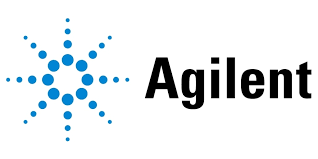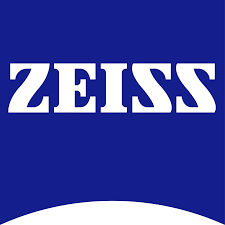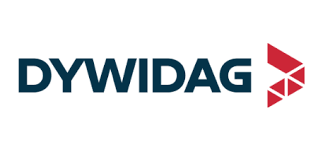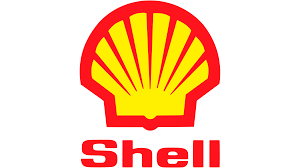Hyper Converged Infrastructure Market Report
Published Date: 15 December 2025 | Report Code: hyper-converged-infrastructure
Hyper Converged Infrastructure Market Size, Share, Industry Trends and Forecast to 2033
This report provides an in-depth analysis of the Hyper Converged Infrastructure (HCI) market from 2023 to 2033, offering insights into market dynamics, trends, and forecasts. Key segments, regional analyses, and leading players are detailed to help stakeholders understand the future landscape of HCI.
| Metric | Value |
|---|---|
| Study Period | 2023 - 2033 |
| 2023 Market Size | $15.20 Billion |
| CAGR (2023-2033) | 12.4% |
| 2033 Market Size | $51.37 Billion |
| Top Companies | Nutanix, VMware, Cisco Systems, Dell Technologies, Hewlett Packard Enterprise (HPE) |
| Last Modified Date | 15 December 2025 |
Hyper Converged Infrastructure Market Report (2023 - 2033)
Hyper Converged Infrastructure Market Overview
Customize Hyper Converged Infrastructure Market Report market research report
- ✔ Get in-depth analysis of Hyper Converged Infrastructure market size, growth, and forecasts.
- ✔ Understand Hyper Converged Infrastructure's regional dynamics and industry-specific trends.
- ✔ Identify potential applications, end-user demand, and growth segments in Hyper Converged Infrastructure
What is the Market Size & CAGR of Hyper Converged Infrastructure market in 2023?
Hyper Converged Infrastructure Industry Analysis
Hyper Converged Infrastructure Market Segmentation and Scope
Tell us your focus area and get a customized research report.
Hyper Converged Infrastructure Market Analysis Report by Region
Europe Hyper Converged Infrastructure Market Report:
The European HCI market is anticipated to rise from $4.01 billion in 2023 to $13.54 billion by 2033, supported by an increasing focus on data security regulations and the implementation of hybrid cloud environments by enterprises.Asia Pacific Hyper Converged Infrastructure Market Report:
In the Asia-Pacific region, the HCI market is poised to grow from $2.92 billion in 2023 to $9.88 billion by 2033. This growth is catalyzed by increasing investments in cloud infrastructure and the digital transformation initiatives undertaken by businesses.North America Hyper Converged Infrastructure Market Report:
North America continues to lead the HCI market, expected to grow from $5.75 billion in 2023 to $19.42 billion by 2033. The region's accelerated digital transformation efforts, along with robust investments in cloud technologies and infrastructure, are significant drivers of this growth.South America Hyper Converged Infrastructure Market Report:
The South American HCI market is projected to expand from $0.84 billion in 2023 to $2.85 billion by 2033. As organizations in this region adopt advanced IT solutions, the demand for HCI is rising, particularly in sectors like retail and healthcare.Middle East & Africa Hyper Converged Infrastructure Market Report:
In the Middle East and Africa, the HCI market is projected to increase from $1.68 billion in 2023 to $5.68 billion by 2033, driven by rising demand for efficient data management and cloud-based services among organizations in the region.Tell us your focus area and get a customized research report.
Hyper Converged Infrastructure Market Analysis By Product
Global Hyper-Converged Infrastructure Market, By Product Market Analysis (2023 - 2033)
The product segment analysis reveals that Software holds a significant market share, projected to grow from $10.10 billion in 2023 to $34.13 billion by 2033. Hardware follows with a market size expected to increase from $3.42 billion to $11.56 billion, while Services are set to grow from $1.68 billion to $5.68 billion during the same period.
Hyper Converged Infrastructure Market Analysis By Application
Global Hyper-Converged Infrastructure Market, By Application Market Analysis (2023 - 2033)
In terms of applications, healthcare is the leading sector, projected to rise from $6.96 billion in 2023 to $23.52 billion by 2033. Other key segments include IT and Telecom, Retail, Education, and Manufacturing, each showing robust growth driven by increased reliance on data and cloud-based solutions.
Hyper Converged Infrastructure Market Analysis By Deployment Mode
Global Hyper-Converged Infrastructure Market, By Deployment Mode Market Analysis (2023 - 2033)
By deployment mode, On-Premises solutions dominate the market with a projected size of $10.10 billion in 2023. Cloud-Based systems are also on the rise, expected to grow from $3.42 billion to $11.56 billion, while Hybrid Deployment is estimated to expand from $1.68 billion to $5.68 billion.
Hyper Converged Infrastructure Market Analysis By End User Industry
Global Hyper-Converged Infrastructure Market, By End-User Industry Market Analysis (2023 - 2033)
The analysis reveals that the healthcare sector represents the highest market share within the end-user industries, with a projected increase from $6.96 billion in 2023 to $23.52 billion by 2033. Other significant sectors include IT and Telecom, Retail, Education, and Manufacturing, all of which are experiencing substantial growth.
Hyper Converged Infrastructure Market Analysis By Technology
Global Hyper-Converged Infrastructure Market, By Technology Market Analysis (2023 - 2033)
Technologies such as Software-Defined Storage and Virtualization Technology are key components of the HCI market, with Software-Defined Storage projected to grow from $10.10 billion to $34.13 billion and Virtualization Technology from $3.42 billion to $11.56 billion between 2023 and 2033. Networking Technology also shows significant growth potential, with expectations of moving from $1.68 billion to $5.68 billion.
Hyper Converged Infrastructure Market Trends and Future Forecast
Tell us your focus area and get a customized research report.
Global Market Leaders and Top Companies in Hyper Converged Infrastructure Industry
Nutanix:
A leader in enterprise cloud computing, Nutanix provides a software platform that powers hyper-converged infrastructure, enhancing data management and operational efficiency.VMware:
VMware is renowned for its virtualization technologies and has expanded its portfolio to include HCI solutions that enable organizations to simplify their IT environments.Cisco Systems:
Cisco focuses on networking and security solutions and has integrated HCI to provide customers with cohesive solutions for managing their IT infrastructure.Dell Technologies:
Dell offers a range of HCI solutions that combine hardware and software to optimize data storage and management for enterprises.Hewlett Packard Enterprise (HPE):
HPE's Hyper Converged Infrastructure solutions empower businesses with flexible, cost-effective, and scalable IT environments designed for digital transformation.We're grateful to work with incredible clients.









FAQs
What is the market size of hyper Converged Infrastructure?
The global hyper-converged infrastructure market is valued at approximately $15.2 billion in 2023 and is expected to grow significantly with a CAGR of 12.4%, reaching new heights in the coming decade.
What are the key market players or companies in this hyper Converged Infrastructure industry?
Major players in the hyper-converged infrastructure sector include prominent companies like VMware, Nutanix, HPE, Cisco, and Dell EMC, which lead the market due to their innovative solutions and strong brand presence.
What are the primary factors driving the growth in the hyper Converged Infrastructure industry?
Key drivers include the rising demand for data center optimization, increased cloud adoption, growing need for scalability, and the shift towards hybrid IT environments that simplify infrastructure management.
Which region is the fastest Growing in the hyper Converged Infrastructure?
North America currently leads the hyper-converged infrastructure market with a projected growth from $5.75 billion in 2023 to $19.42 billion by 2033, followed by Europe, showing strong expansion potential.
Does ConsaInsights provide customized market report data for the hyper Converged Infrastructure industry?
Yes, ConsaInsights offers tailored market report data, providing insights specific to the hyper-converged infrastructure sector, ensuring clients receive relevant and actionable information for their unique needs.
What deliverables can I expect from this hyper Converged Infrastructure market research project?
Deliverables typically include comprehensive market analysis reports, growth forecasts, competitive landscape evaluations, segmentation data, and insights on emerging trends in hyper-converged infrastructure.
What are the market trends of hyper Converged Infrastructure?
Current market trends include the increased integration of artificial intelligence, greater emphasis on edge computing, and the continuous evolution towards flexible, multi-cloud environments that enhance business agility.
